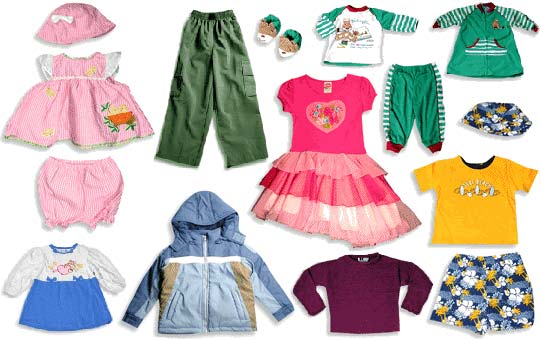
Kid’s fashion is a growing trend at present with kids becoming conscious about fashion and what they wear. Kid’s apparel are manufactured mainly of cotton, as cotton is easy to wash and leads to less shrinking or fading of color. Moreover, parents prefer the soft and natural feel of cotton for their kids. Comfort, convenience, and safety are the most important factors that are taken into consideration by parents while buying clothes and footwear for their kids. One-piece outfits are more popular, as they are easy to wear and take off. Clothing with hanging strings or ribbons are mostly avoided. Comfortable kid’s outfits include wetsuits, leggings, and pajamas. Some fashion-conscious parents look for cute and stylish designs in apparel for their children.
Demographic shift is one of the major driving factors of the kids wear market. Increase in disposable income of parents, rising media coverage, peer pressure, and brand awareness among kids are factors which fuel the growth of the global kids wear market. Rapid urbanization has resulted in retail expansion, and internet retailing has also picked up in various parts of the world. The trend of buying branded kids wear products is particularly strong amongst parents living in metro cities. However, parents these days consider the option of spending on branded products for their kids more as a luxury than a necessity.
Want to gain competitive advantage from our actionable, insightful business intelligence? Request a sample https://www.transparencymarketresearch.com/sample/sample.php?flag=S&rep_id=62715

In recent years, consumer buying behavior has changed, with more attention given to a person’s appearance, including that of kids. This factor has created huge opportunity for companies and brands to produce more fashionable kid’s wear with variety of designs. Apparel and footwear are manufactured in such a way that they can be worn on different occasions. Kids wear market has followed recent trends in adult’s fashion, which prioritizes performance and comfort. Most kids possibly do not perform yoga or go to the gym; however they copy their parents’ style of dressing. Online distribution channel has enhanced the sales of kids wear. Many customers tend to buy from online stores due to increasing penetration of the internet and heavy discounts from these stores.
The kids wear market experiences certain restraining factors such as increase in raw material prices (fabric), and current fashion becoming obsolete over a period of time. Furthermore, some of the kid’s apparel and footwear are costly and unaffordable for most people in under developed economies. Several manufacturers use fancy materials to increase the attractiveness of the apparel and footwear which might cause discomfort to the children. These factors hamper the growth of the kids wear market.
The global kids wear market can be segmented based on product type, end-user, distribution channel, and region. On the basis of product type, the market can be classified into apparel and footwear. Furthermore, apparel can be classified into bottom wear, top wear, underwear, and others. Footwear segment is further divided into shoes, boots, slippers, and others. On the basis of end-user, the global kids wear market can be classified into boys and girls. In terms of distribution channel, the market can be classified into online and offline channels. The offline distribution channel is again divided into specialty stores, hypermarkets/supermarkets, and small retail stores. Based on region, the market can be divided into North America, Europe, Asia Pacific, Middle East & Africa, and South America. These regions are further segmented into various countries such as the U.S., Canada, U.K., Germany, France, Italy, China, India, Japan, GCC countries, South Africa, and Brazil.
Key players in the global kids wear market are V.F. Corporation, The Gap Inc., Levi Strauss & Co., The Walt Disney Company, H&M, Raymond, DS Corporation, Gini & Jony, and Romy and the Bunnies.
This study by TMR is all-encompassing framework of the dynamics of the market. It mainly comprises critical assessment of consumers’ or customers’ journeys, current and emerging avenues, and strategic framework to enable CXOs take effective decisions.
Our key underpinning is the 4-Quadrant Framework EIRS that offers detailed visualization of four elements:
- Customer Experience Maps
- Insights and Tools based on data-driven research
- Actionable Results to meet all the business priorities
- Strategic Frameworks to boost the growth journey
The study strives to evaluate the current and future growth prospects, untapped avenues, factors shaping their revenue potential, and demand and consumption patterns in the global market by breaking it into region-wise assessment.
Looking for exclusive market insights from business experts? Buy Now Report here https://www.transparencymarketresearch.com/checkout.php?rep_id=62715<ype=S
The following regional segments are covered comprehensively:
- North America
- Asia Pacific
- Europe
- Latin America
- The Middle East and Africa
The EIRS quadrant framework in the report sums up our wide spectrum of data-driven research and advisory for CXOs to help them make better decisions for their businesses and stay as leaders.





